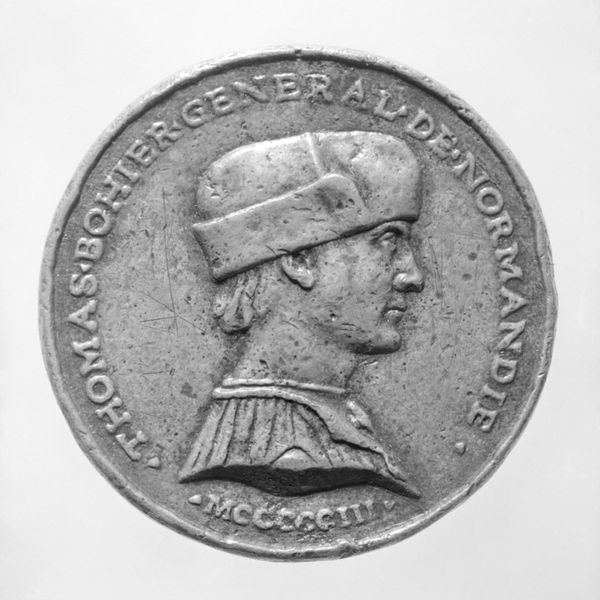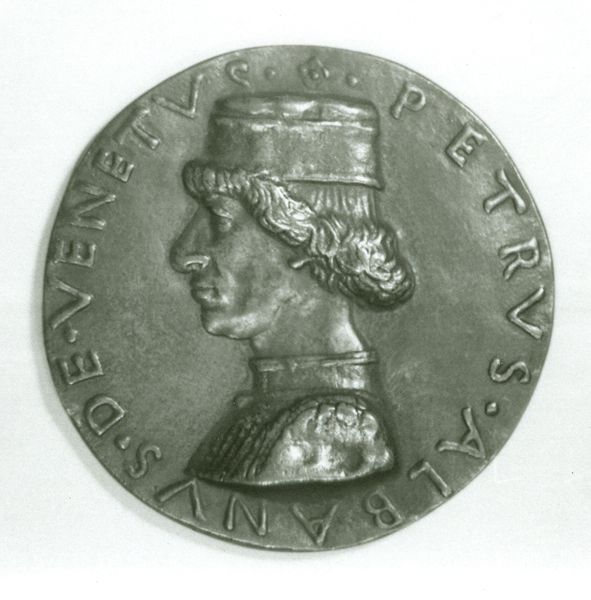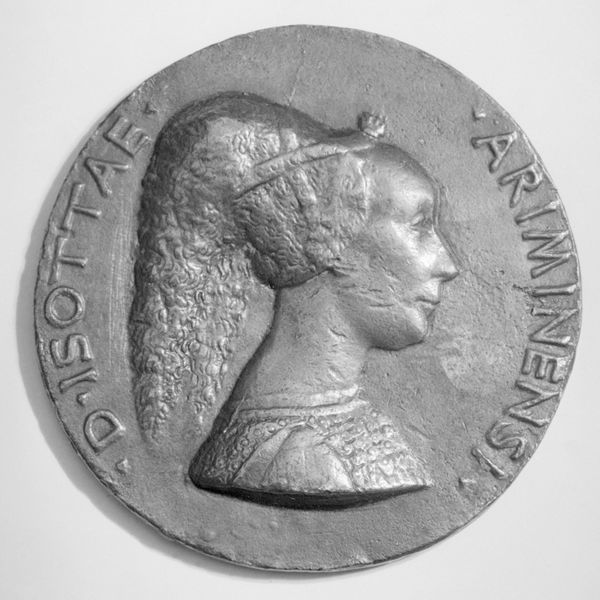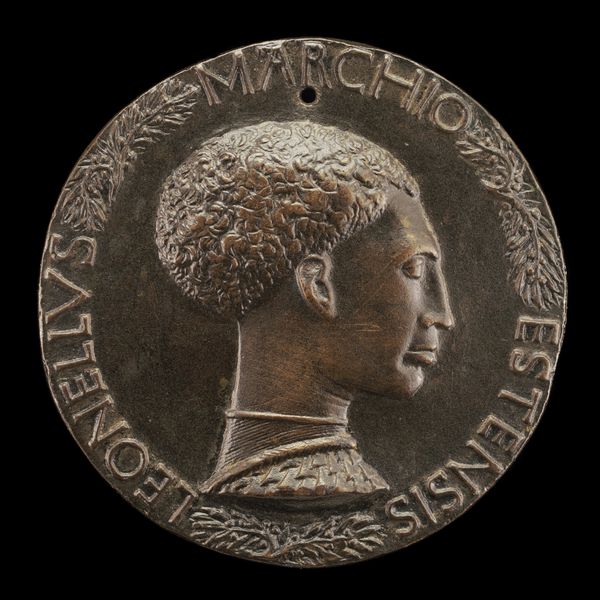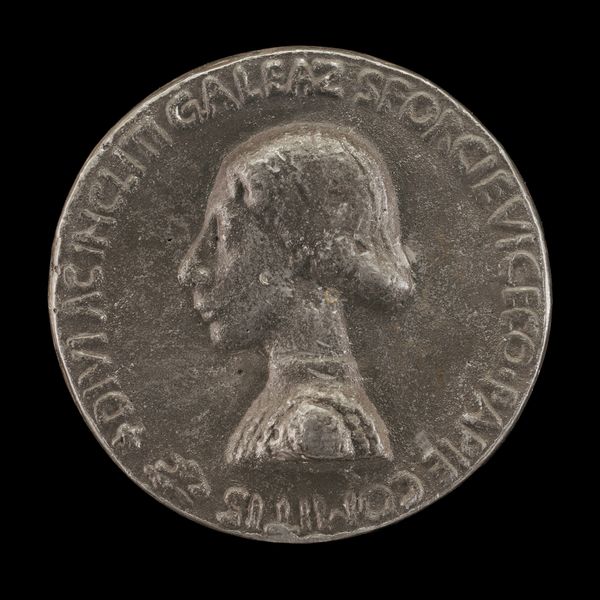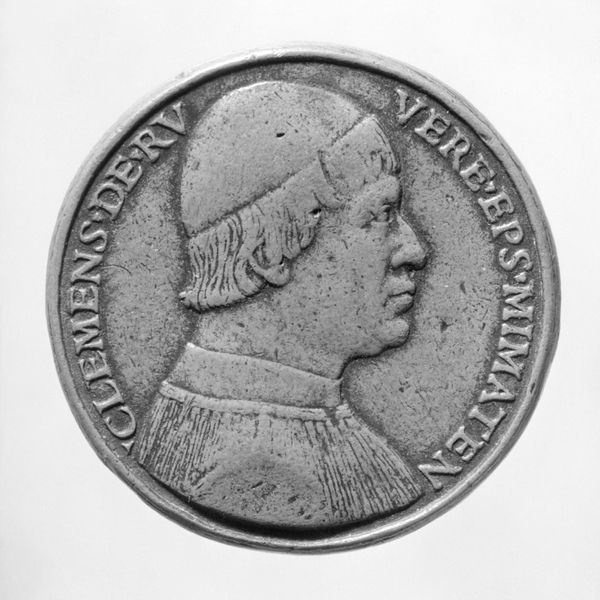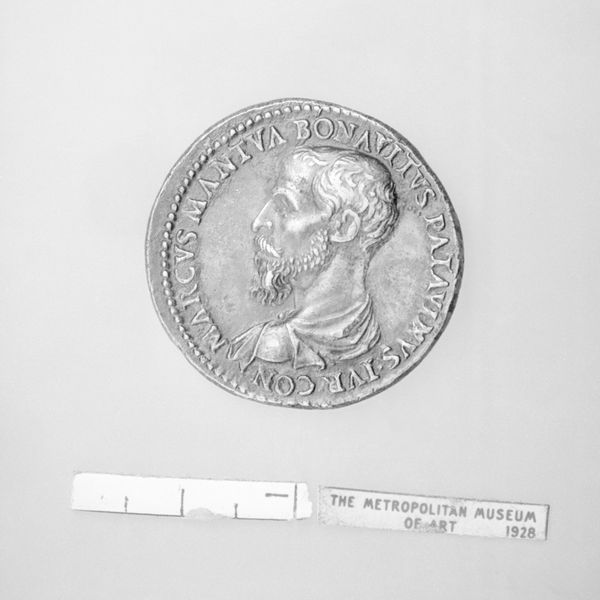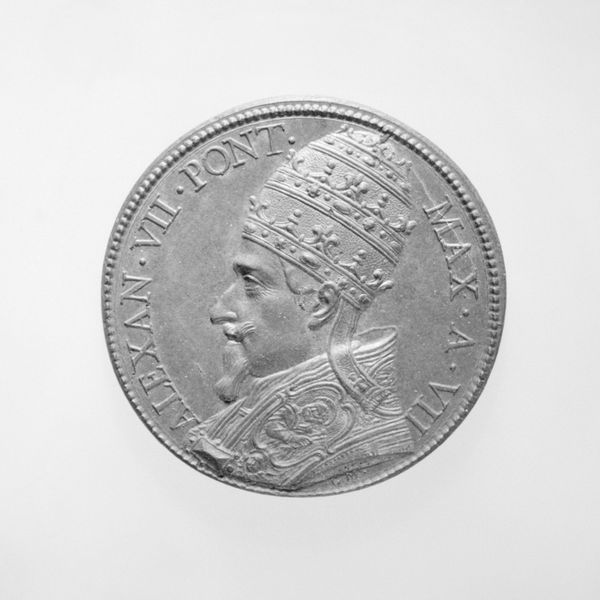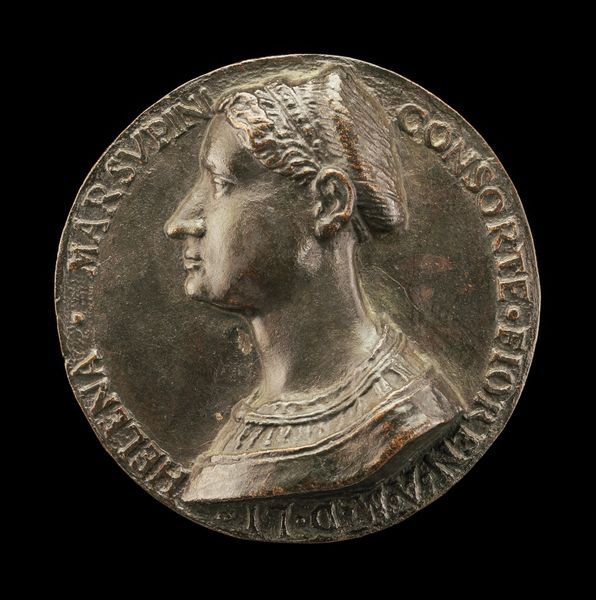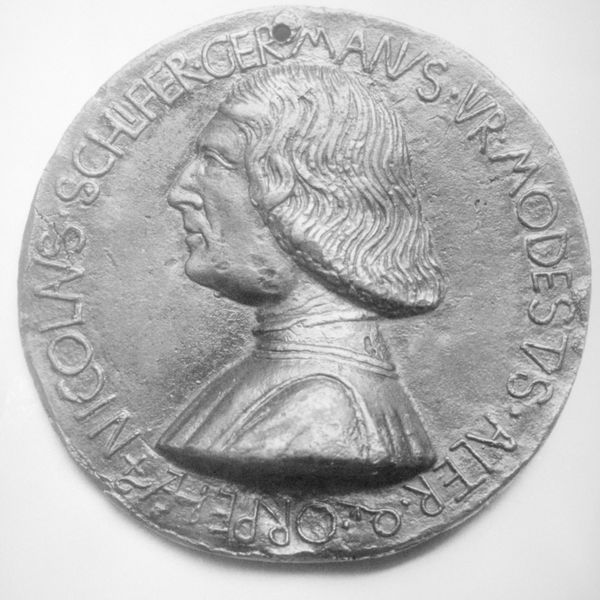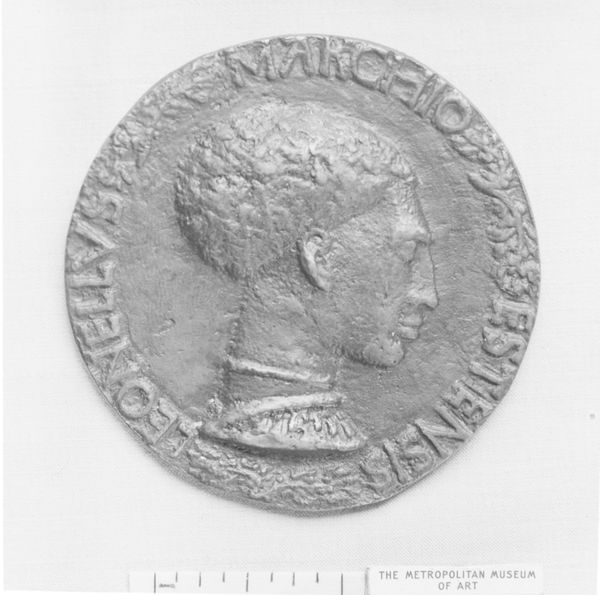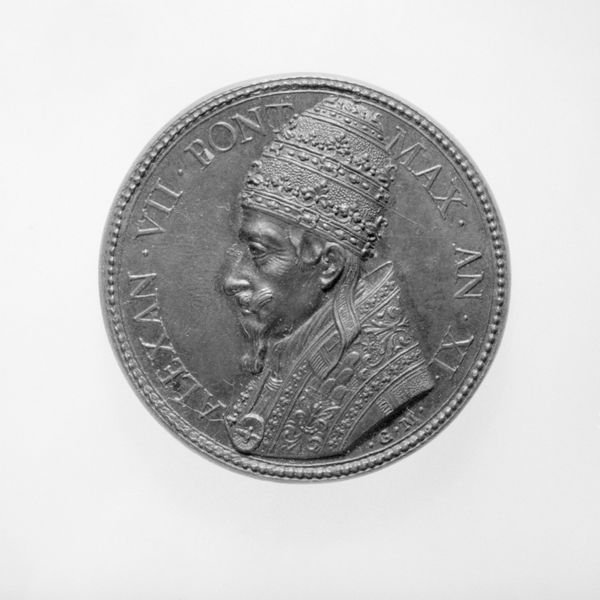
relief, sculpture
#
portrait
#
medal
#
portrait image
#
relief
#
sculptural image
#
ancient-mediterranean
#
sculpture
#
men
#
decorative-art
#
italian-renaissance
#
profile
Dimensions: Diameter: 73 mm
Copyright: Public Domain
Curator: Looking at this circular relief sculpture, I'm immediately struck by its formality. There's a certain severity, despite the classical influences. Editor: Indeed. This is a 15th-century portrait medal of Giovanni Aloisius Toscani, now held at the Metropolitan Museum of Art. These medals served as both portable portraits and status symbols during the Italian Renaissance. Curator: A status symbol—yes, that solemn profile certainly suggests someone of importance. The incised Latin inscription lends an air of permanence. It evokes classical coin imagery, echoing ancient power structures through the visual language of portraiture and inscription. What did this visual language communicate about Toscani and his place in society? Editor: Well, such medals broadcast individual achievements, social standing, and intellectual affiliations within a network of elites. We see the rebirth of the antique form married to Renaissance sensibilities, reflecting Humanism's focus on the individual. Consider the material too, probably bronze or lead; relatively inexpensive compared to gold or silver, but lending the piece gravitas. The power was in the distribution and recognition of this likeness. Curator: You make a compelling point about the significance of reproduction here. The act of disseminating a likeness surely carried a great deal of symbolic weight. Lysippus the Younger—that’s the die cutter behind this medal. Is there any symbolic value in this artist being known as Lysippus “The Younger”? Editor: That conscious linking to classical precedents—in the form and in the implied artistic lineage through the chosen moniker, Lysippus—establishes cultural capital. These medals didn’t just present an individual, they asserted participation in a grand tradition of learning and power. I can’t help but see this form as a type of controlled image cultivation. Curator: It is striking how this seemingly simple artwork can unlock so many historical layers, cultural aspirations, and intricate webs of personal and societal ambition. Editor: Absolutely, that's what I love about such pieces, they distill an era, reflecting identity, authority, and remembrance within a compact, potent form.
Comments
No comments
Be the first to comment and join the conversation on the ultimate creative platform.
